
Access control
What is access control?
Access control is the process of regulating who has access to a building or facility. One of the key components of access control systems is the id medium and technology that is used to grant or deny access. In this post, we will take an inside look at some of the most used technologies in access control systems from SimonsVoss, including locking cylinders, smart handles, smart relay readers, transponders, and MIFARE cards.
"Who is authorised to access when and where?". This principle applies to the security of persons, objects or data. Access control clearly defines the authorisations for access categories that can be individually defined. This applies to both local and temporal restrictions.
Possible access control installations

Why are access controls used?
Safety is always most important. Access control can greatly increase the protection of people, valuables and buildings. This can, for example, be schools or universities to which only authorised persons may have access. But office buildings are also secured by access control to secure sensitive data and valuables.
How does access control work?
In the past, security personnel were often used as human access control. Personnel were responsible for manually checking access and granting or denying access. Controlling building security by means of building corridors was also one of the areas of responsibility of personnel access control.
Nowadays, digital, electronic access control is on the rise. “Stop, you can't come in here!" – this is how electronic access control works fully automatically. It is the doorman that ensures security and comfort by ensuring legitimate people have access and keeping uninvited guests out. You tell the digital doorman which guests should be given WHEN and WHY access. The access control system ensures an optimal balance for a high level of security, convenient access and easy management. The complete system can be individually configured and adapted to the respective local conditions.
Components of access control
Access control consists of at least three elementary components:
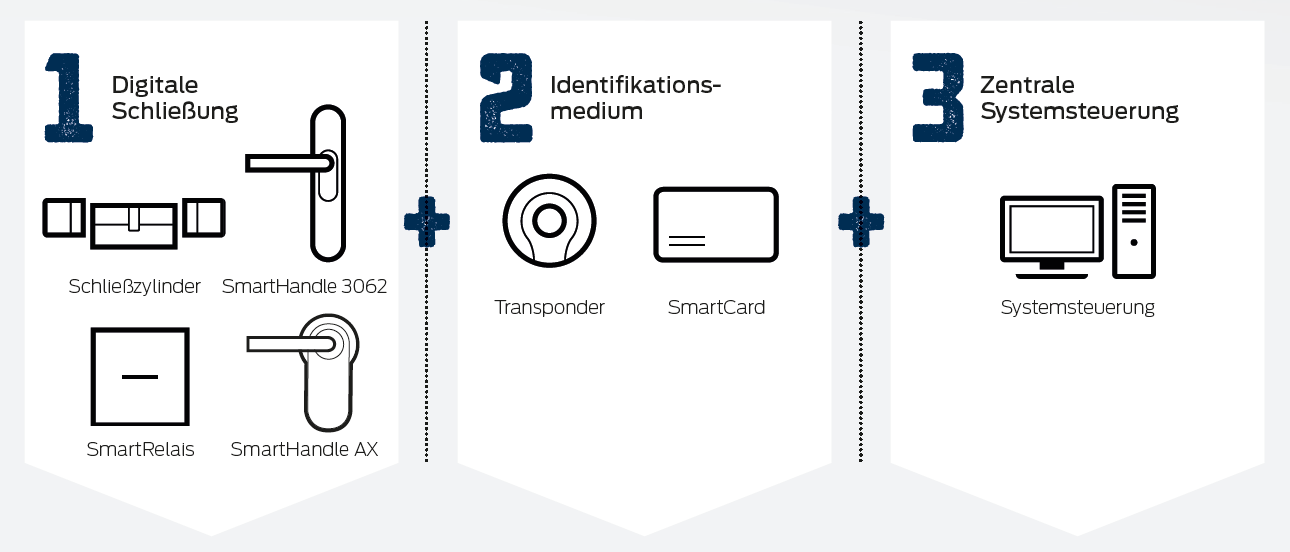
ass
1. The digital locking device:
All persons with access rights are known to them. All monitoring and control functions for the respective door are carried out here.
2. The ID medium:
The ticket to the respective area. Transponder or SmartCard? The shape of the medium can be selected as desired!
3. The central system control:
Access authorisations are centrally managed here and the digital locking device and identification medium are transmitted.
Access control can be extended with a wide range of systems as desired. Whether intelligently networked control units or software add-ons, there are virtually no limits to the imagination.
Important questions when using access control systems
When using access control, the following questions in particular need to be clarified:
- Does access take place mechanically or digitally?
-
What exactly should be safeguarded?
-
Is only one access affected or several?
-
How can access be monitored and controlled?
-
How can access be managed dynamically and easily?
Areas of application of access control systems
Whether university, company premises, warehouses or offices - there are people, material assets or sensitive data everywhere. This must be protected against damage, theft or espionage. Previously, gatekeepers with a bunch of keys opened the door, today this takes place automatically via modern access control. One example of this is banks, hospitals, or data centres at airports with particularly sensitive areas, which must be protected against unauthorised access. In hotels too, guests should only be allowed to enter their own booked room, but at the same time have access to the wellness area. The supermarket must be accessible to employees and suppliers before opening the store, but only let customers in at 8 a.m. Production employees must have access to the company during the shift change, but must not enter particularly sensitive or hazardous areas. All of this is regulated by access control, always in accordance with the guiding principle: "Who is allowed to go where and when? ”
Access control identification
Access control can be identified using different media. These can be active, passive or biometric.
Active identification media are characterised by their autonomous power supply, which guarantees a longer reading range. Passive media works without its own energy sources and are used in a wide range of systems. In the third option, biometrics, fingerprint, retina scan, palm print or face are used for identification at the access control reader.
A distinction is also made between contact-based and contactless identification.
The contact-based version is a method that is no longer contemporary. Nevertheless, this variant is still popular as it is very inexpensive. For example, using Hotels magnetic cards to operate their access controls. Wear and tear is extremely high.
The contactless alternative, on the other hand, works using RFID technology. Transponders or cards and can be read out up to one metre contactlessly. This technology is often also integrated into smartphones, wristwatches, mechanical keys or clothing. RFID technology is also already used to mark animals or as implants in humans.
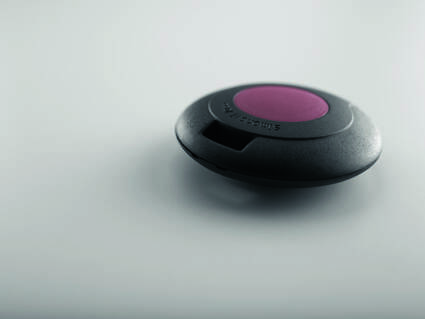
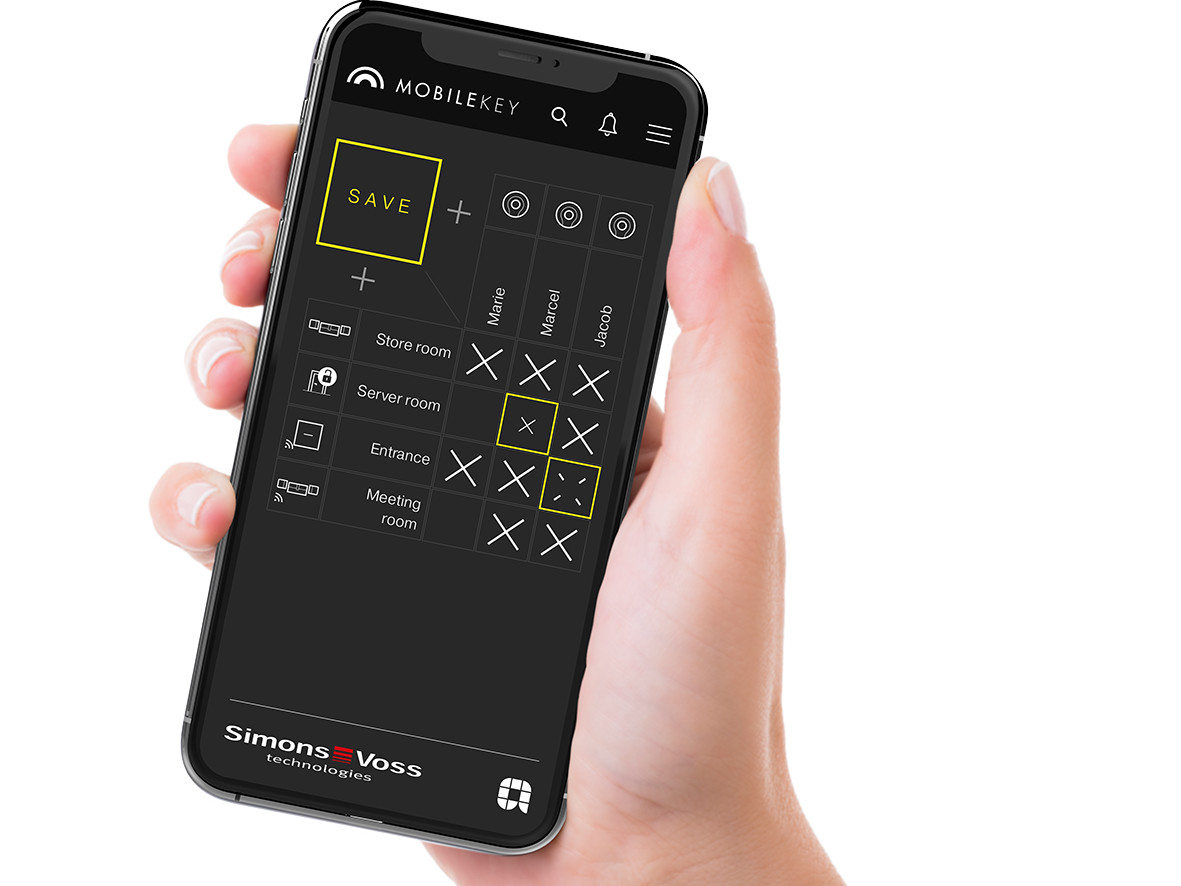
Access control using smartphones
Access control via smartphone and Bluetooth is now easily possible. Either the unique MAC address of the smartphone is read out or special software is installed on the device to grant access.
Security of access control identification media
Generally speaking, all of the aforementioned identification media are considered very secure. The magnetic cards are an exception to this rule. A lack of security is often cited as a criticism, as cards of this type can be copied relatively easily.
Technology used in keyless entry systems
The locking cylinder
Traditional
A traditional locking cylinder is a mechanism that is used to lock and unlock a door, such as the doors of our homes. It is typically located in the doorknob or handle and can be operated with a key or a code. Locking cylinders come in a variety of sizes and styles and can be used in both residential and commercial settings. Some locking cylinders are even designed to be rekeyed so that the same key can be used to open multiple doors –while on the surface, this seems like it could be the answer to frustrations, what it actually does is heighten risk and increase vulnerability.
Keyless Access Control
The SimonsVoss Digital Locking Cylinder provides service exactly as required at each point throughout the building. The cylinder’s intelligent internal components and wide range of different designs, such as those for anti-panic and fire doors, provide precisely matched solutions for virtually any application.
This Digital Locking Cylinder is extremely easy to fit as it can be installed within minutes with no need for any wiring or drilling. Standard button cells reliably ensure up to 80,000 locking operations in an online network.
Smart handles
Smart handles are a newer type of access control technology that allows for keyless entry. Instead of using a key or a code, a smart handle uses a SmartCard or Transponder to grant access. This type of technology is becoming increasingly popular in commercial buildings, as it eliminates the need for employees to carry around keys or remember codes.
The Smarthandle AX provides a sleek, modern and flexible solution to any situation onsite. The handle can be mounted on the left or right and can be combined with a panic bar. With an exceptionally long battery life for up to 300,000 operations, it is a future-proof investment that forms part of the SimonsVoss promise.
Transponders
A transponder is a small device that typically contains a small chip that stores information, such as a unique identification number – such as the keys in which we open our cars. When the transponder is presented to a reader, the information on the chip is read and used to grant or deny access.
System 3060 from SimonsVoss uses transponders or SmartCards to digital un-lockicylinders, SmartHandles and SmartRelays. You can manage an incredible 64,000 locking devices with your transponder and open doors and gates up to 400,000 times with a single battery.
MIFARE cards
MIFARE cards use radio frequency identification (RFID) technology to grant access. The cards contain a small chip that stores information, such as a unique identification number. When the card is presented to a reader, the information on the chip is read and used to grant or deny access. MIFARE cards are commonly used in commercial buildings and are known for their prominent level of security.
Benefits of access control systems
Security of access control identification media
Generally speaking, all of the aforementioned identification media are considered very secure. The magnetic cards are an exception to this rule. A lack of security is often cited as a criticism, as cards of this type can be copied relatively easily.
How to choose the right access control system
Access control is a vital component of modern security systems. Choosing the right access control system is crucial to ensure that you have the right level of security and convenience for your organisation.
- Determine your access control needs: Before choosing an access control system, it's important to determine your organisation's access control needs. Consider the size of your facility, the number of people that need access, the type of environment (indoor or outdoor), and the level of security required.
- Consider the type of id medium: There are several types of access control sensors, including card readers, biometric devices (fingerprint, iris, face recognition), and keypads. Choose the type of sensor that best fits your organisation's needs and budget.
- Integration with existing systems: Consider if you want your access control system to integrate with your existing security systems, such as video surveillance or fire alarm systems. Integration can help to provide a more comprehensive security solution and can be more cost-effective.
- Scalability: Choose an access control system that can easily expand as your organisation grows. Some systems are designed to handle hundreds of users, while others are limited to a few dozen. Make sure that the system you choose can be easily expanded as needed.
- Budget: The cost of access control systems varies widely, from a few hundred pounds for a basic system to several thousand pounds for a more advanced system. Determine your budget and choose a system that fits within your budget while still providing the necessary level of security.
- Technical support: Choose a system that has reliable technical support, in case you need help setting it up, troubleshooting, or updating the system.
Benefits of access control systems
- Protection of persons, property and data
- Organised access by authorised persons using individually definable access authorisations
- Simple changes to authorisations
- Optimum overview of access authorisations for all persons
- Uncomplicated and, above all, inexpensive handling in the event of loss of identification media (no replacement of cylinders or the entire system necessary, but simple blocking of the lost medium)
- Unauthorized access or tampering alarm
- Optional connection to time recording systems
Mechanical or digital access control?
The answer to this question is simple: Digital access control! Nowadays, rapid digitalisation and evergrowing security requirements can be mastered without any problems by a digital variant. A mechanical variant reaches its limits in increasingly flexible working time models at the latest.
The good news: Mechanical systems can easily be replaced with digital access control without the need for cables. It does not matter whether it is a new or old building, how many doors exist or how many buildings are affected.
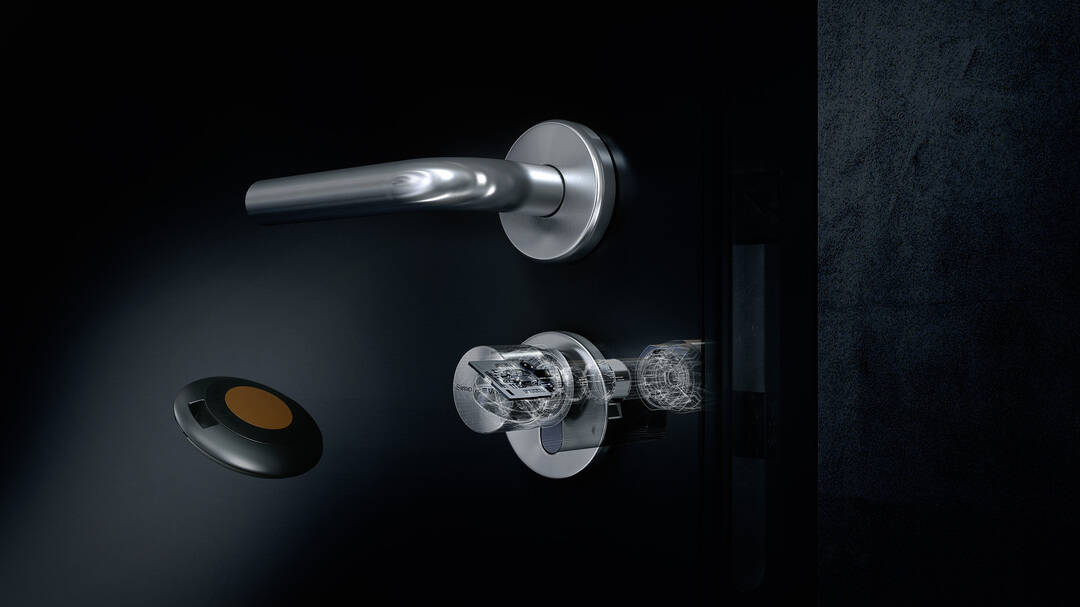
SimonsVoss – Your expert in digital access control
SimonsVoss is the pioneer when it comes to remote, wireless access control systems. SimonsVoss locking systems combine intelligent functions coupled with optimum German-made quality. As a technology leader in digital locking technology, SimonsVoss attaches particular importance to scalability, optimum security, reliable components, high-performance software and simple operation.
Courage to innovate, to think and act sustainably and to a high degree of appreciation among employees and partners form the basis for SimonsVoss's success.
Advantages of SimonsVoss digital locking systems
Decades of experience have led to success, which is otherwise difficult to achieve: combining flexibility and security. Creating such an optimum quality combination and custom-made systems are the SimonsVoss trademark. All systems meet highly complex requirements in large buildings, can be expanded easily and quickly and function consistently and cable-free. The advantages are obvious:
- Greater control and security
At SimonsVoss, security means being able to immediately block more than just lost keys. Security also means protecting electronic keys against unauthorised copying. Security means making sensitive areas centrally controllable with wireless door monitoring. And at the same time be able to limit and document all access. -
More quality
As a pioneer in digital locking technology, SimonsVoss manufactures all components at its own production site in Germany. For us, German-made quality means long service life, reliability of the mechanical components, trouble-free operation and, last but not least, minimum power consumption. -
Greater convenience
Doors can be opened and closed at the push of a button using an electronic key for all entrances. Door security for your own employees, but also guests, is no longer an obstacle. SimonsVoss systems also give you a complete overview at all times of who has access where and when. Access rights can be changed conveniently, at any time, spontaneously and flexibly. -
More service
Reliability builds trust. The SimonsVoss service team is always there for you and supports you via the hotline, on site or remotely. -
Completely future-proof investment
SimonsVoss has always put the highest priority on extending digital access control systems cost-effectively, even after many years of trouble-free expansion with new software and new components.
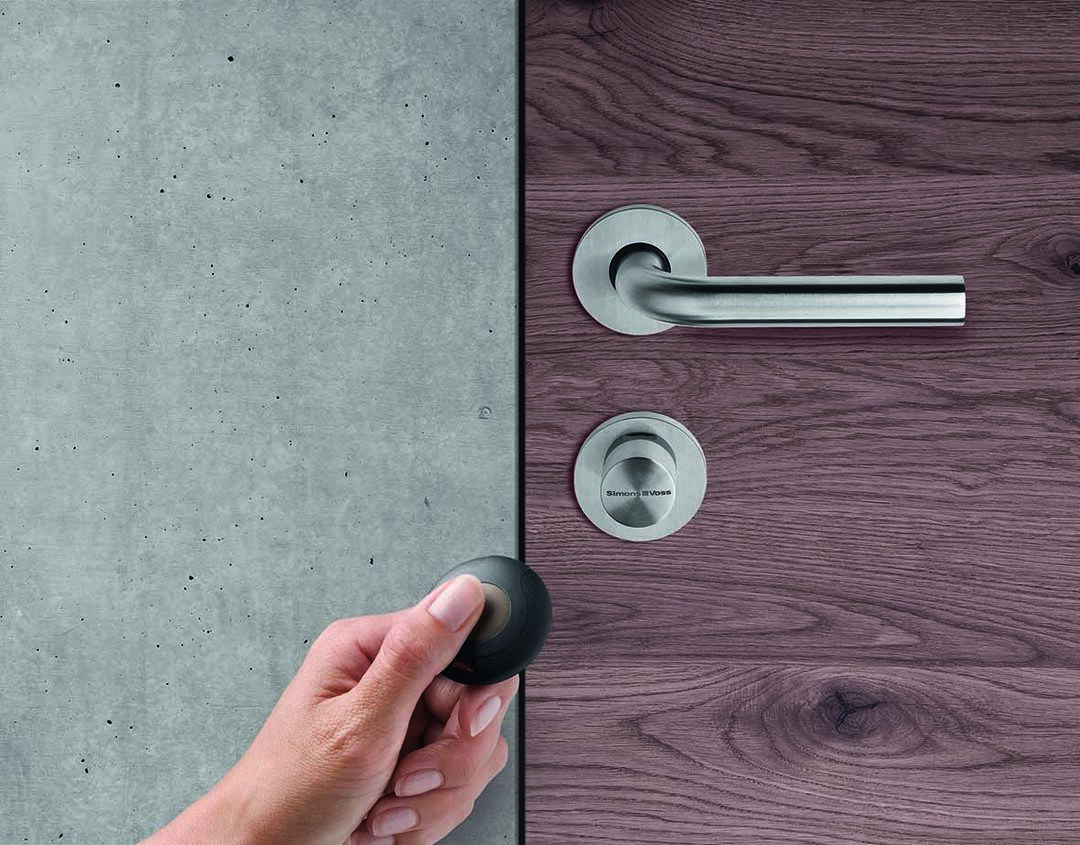
Why Choose Access Control from SimonsVoss?
Flexibility: SimonsVoss systems are highly flexible and can be adapted to meet the specific needs of any building or facility. This means that the systems can be customised to suit the size of the building, the number of employees or visitors, and the level of security required.
Scalability: SimonsVoss systems are easily scalable, which means that they can be expanded as the needs of the building or facility change. For example, if the number of employees or visitors increases, the system can be easily expanded to accommodate the additional users.
Security: We are known for our high level of security. The systems use advanced encryption and authentication methods to ensure that only authorised individuals have access to the building or facility.
Ease of use: Our systems are designed for humans and are easy to use. The systems are intuitive and user-friendly, which means that employees and visitors can quickly and easily gain access to the building or facility.
Integration: SimonsVoss systems can be easily integrated certain systems, such as security cameras, alarms, and fire alarms. This allows for a seamless and comprehensive security solution.
Remote management: All our systems can be managed remotely, which means that building managers or security personnel can monitor and control the system from anywhere.
With the rise of digital technologies, access control systems have become more secure, convenient, and efficient and the integration of access control technology with other security systems, such as video surveillance and fire alarms, provides a more comprehensive security solution.
The access control systems from SimonsVoss provide you with technology that has improved security, increased efficiency, and provides you with great control over your access. Our team of UK experts have the knowledge and experience to advise you on the right solution.
